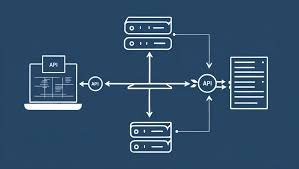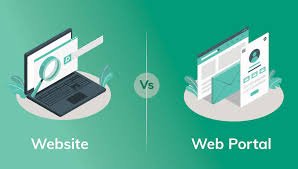How to Choose the Right Platform for Your Web Portal Development

Choosing the right platform for developing a web portal is crucial for ensuring its scalability, performance, and long-term success. With so many options available, businesses often find it challenging to select a platform that meets their specific needs. In this article, we’ll guide you through the key factors to consider when choosing the best platform for your web portal development.
A web portal serves as the gateway to your business’s digital presence, offering customers, employees, or partners access to vital services and resources. The platform you choose for developing your web portal has a significant impact on its functionality, performance, and future growth. Here are the essential factors to consider when selecting the right platform for your web portal development:
- Business Requirements and Objectives:
Before you select a platform, it’s essential to understand your business’s needs. Are you building an internal portal for employees, a customer-facing portal, or a partner collaboration platform? The platform you choose should be capable of supporting your objectives. If you require advanced features like e-commerce integration, user authentication, or complex data analytics, make sure the platform can handle such functionalities. - Scalability and Flexibility:
As your business grows, your web portal will need to scale to accommodate increased traffic, more users, and expanded features. Choose a platform that offers scalability, allowing you to add or modify functionalities as needed. Platforms like cloud-based solutions or those built on microservices architectures are great for scalability and flexibility, ensuring your portal can grow with your business. - Customization and Integration Capabilities:
Every business has unique requirements, and your portal must be able to adapt to these needs. A good platform should offer customization options that allow you to tailor the portal’s look and feel, as well as integrate with existing systems like CRM, ERP, or third-party APIs. Consider platforms that offer open-source solutions or flexible frameworks to ensure full control over the portal’s design and functionality. - User Experience (UX) Design:
The platform should support the development of a user-friendly interface that provides a seamless experience. A web portal must be intuitive, easy to navigate, and mobile-responsive to meet the demands of today’s users. Look for platforms that support responsive design, allowing your portal to work seamlessly across devices and screen sizes. - Security Features:
Security is a critical aspect of any web portal, especially if it handles sensitive data like customer information, financial transactions, or personal details. Choose a platform that offers robust security features such as data encryption, secure login systems, role-based access control, and protection against common vulnerabilities like cross-site scripting (XSS) and SQL injection. - Performance and Speed:
Performance is one of the most important factors when choosing a web portal platform. Slow-loading portals can lead to poor user experience and reduced engagement. Opt for platforms that optimize server response times, implement caching mechanisms, and allow for easy integration with Content Delivery Networks (CDNs) to improve portal speed. - Support for Multi-Device and Multi-Browser Compatibility:
Today’s users expect a consistent experience across various devices and browsers. Your web portal platform should support multi-device functionality, ensuring the portal works smoothly on desktops, tablets, and mobile devices. It should also be compatible with multiple browsers to ensure wide accessibility. - Cost and Maintenance:
The total cost of ownership includes not only the initial development costs but also long-term maintenance and updates. Platforms like open-source solutions may have lower upfront costs, but they may require more resources for ongoing maintenance and updates. Cloud-based or SaaS platforms, on the other hand, offer managed services, which can reduce the operational burden but may have higher recurring costs. Assess your budget and long-term maintenance requirements when choosing a platform. - Community Support and Documentation:
Platforms with a large and active community can be a significant advantage. A strong community can provide support, resources, and plugins that can simplify the development process. Additionally, check the availability of detailed documentation and tutorials that can help you or your development team troubleshoot issues and implement features more effectively. - Time to Market:
The time it takes to launch your web portal is an important consideration. Some platforms offer pre-built modules, templates, and integrations that can accelerate development, allowing you to bring the portal to market faster. Consider how quickly you need the portal to be operational and whether the platform can support rapid development. - Cloud-Based vs. On-Premise Solutions:
Cloud-based platforms offer flexibility, scalability, and ease of management without requiring you to maintain the infrastructure. On-premise solutions provide more control over the data and security but can require significant investment in hardware and IT resources. Depending on your business’s needs, choose the option that offers the best balance of control, scalability, and cost-effectiveness. - Ongoing Evolution and Innovation:
Web technology is constantly evolving, and it’s essential to choose a platform that evolves alongside industry trends. Opt for platforms that stay up to date with modern development practices, support emerging technologies like AI and machine learning, and integrate well with future innovations in web development.
In conclusion, choosing the right platform for your web portal development is a critical decision that impacts your portal’s functionality, performance, and long-term success. By considering factors such as business requirements, scalability, security, user experience, and cost, you can select a platform that meets both your current needs and future growth. Make sure to work closely with your development team to assess your options and choose the best platform that aligns with your business goals.














